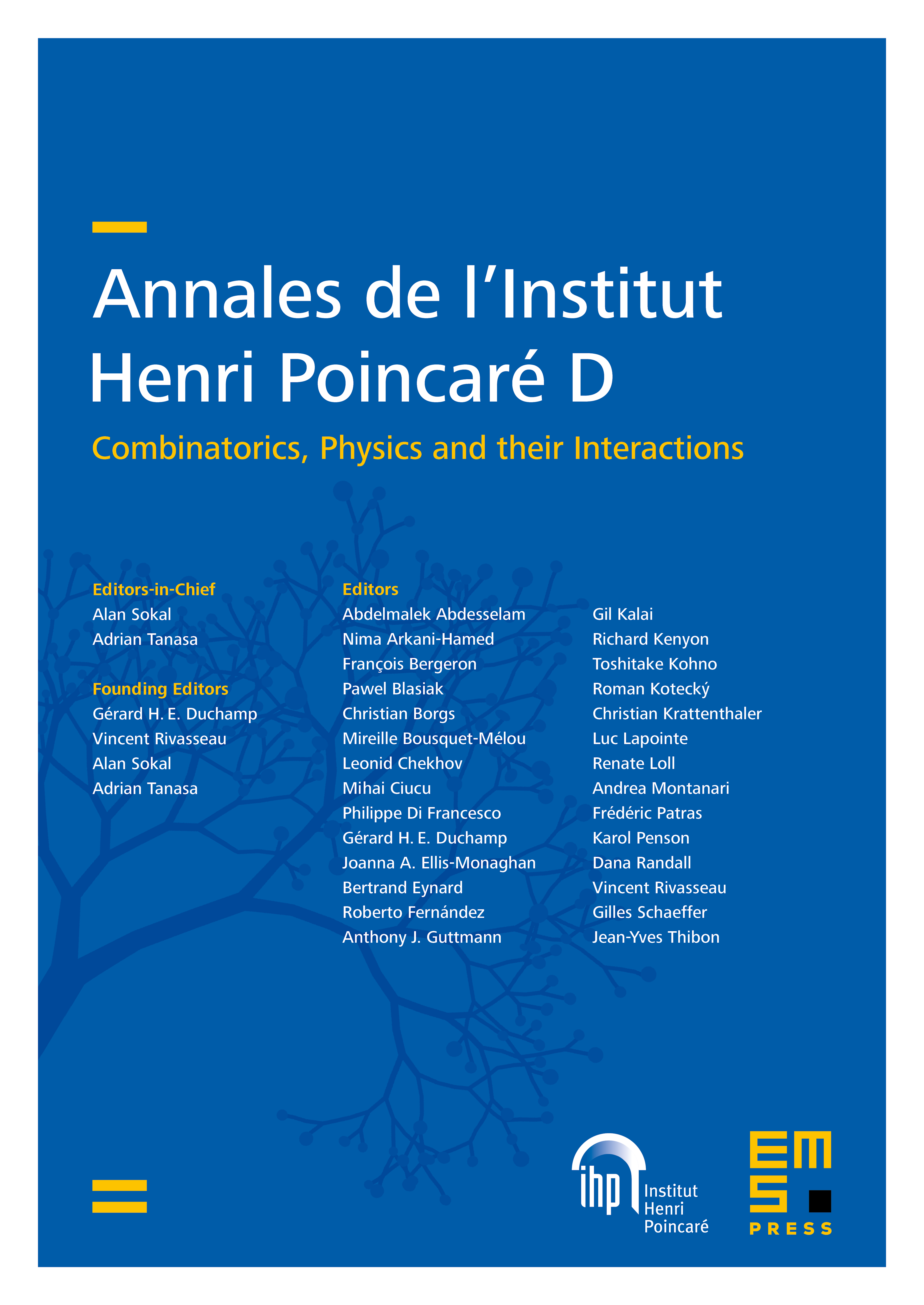-randomized Robinson–Schensted–Knuth correspondences and random polymers
Konstantin Matveev
Harvard University, Cambridge, USALeonid Petrov
Russian Academy of Sciences, Moscow, Russian Federation

Abstract
We introduce and study -randomized Robinson–Schensted–Knuth (RSK) correspondences which interpolate between the classical () and geometric ) RSK correspondences (the latter ones are sometimes also called tropical).
For our correspondences are randomized, i.e., the result of an insertion is a certain probability distribution on semistandard Young tableaux. Because of this randomness, we use the language of discrete time Markov dynamics on two-dimensional interlacing particle arrays (these arrays are in a natural bijection with semistandard tableaux). Our dynamics act nicely on a certain class of probability measures on arrays, namely, on -Whittaker processes (which are versions of Macdonald processes of Borodin–Corwin [8]). We present four Markov dynamics which for reduce to the classical row or column RSK correspondences applied to a random input matrix with independent geometric or Bernoulli entries.
Our new two-dimensional discrete time dynamics generalize and extend several known constructions. (1) The discrete time -TASEPs studied by Borodin–Corwin [7] arise as one-dimensional marginals of our „column" dynamics. In a similar way, our“row" dynamics lead to discrete time -PushTASEPs – new integrable particle systems in the Kardar–Parisi–Zhang universality class. We employ these new one-dimensional discrete time systems to establish a Fredholm determinantal formula for the two-sided continuous time -PushASEP conjectured by Corwin–Petrov [23]. (2) In a certain Poisson-type limit (from discrete to continuous time), our two-dimensional dynamics reduce to the -randomized column and row Robinson–Schensted correspondences introduced by O’Connell–Pei [59] and Borodin–Petrov [15], respectively. (3) In a scaling limit as , two of our four dynamics on interlacing arrays turn into the geometric RSK correspondences associated with log-Gamma (introduced by Seppäläinen [70] or strict-weak (introduced independently by O’Connell–Ortmann [58] and Corwin–Seppäläinen–Shen [25] directed random lattice polymers.
Cite this article
Konstantin Matveev, Leonid Petrov, -randomized Robinson–Schensted–Knuth correspondences and random polymers. Ann. Inst. Henri Poincaré Comb. Phys. Interact. 4 (2017), no. 1, pp. 1–123
DOI 10.4171/AIHPD/36